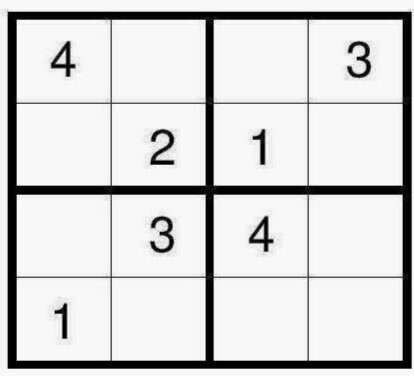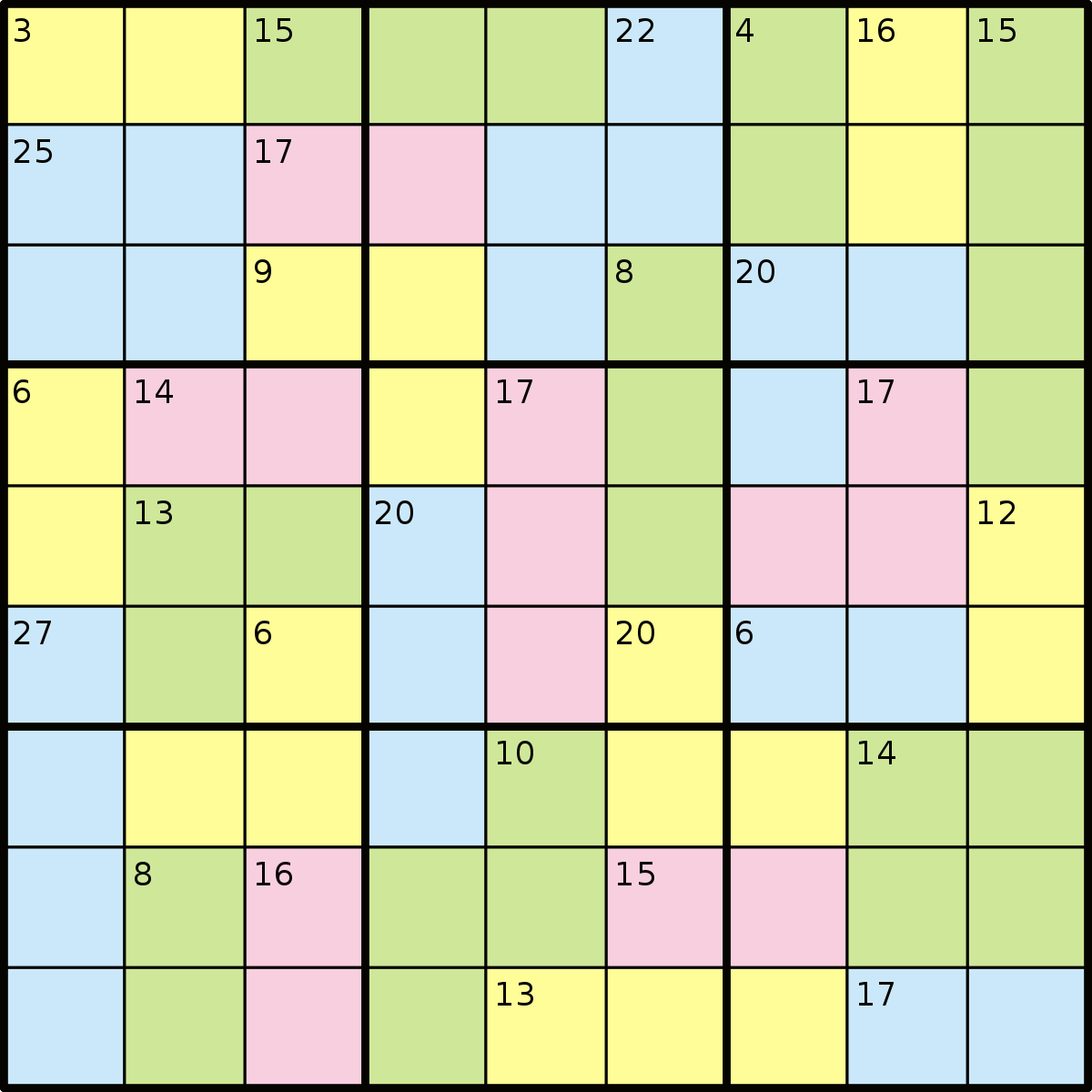Killer Sudoku
Last week was... stressful! While I waited with the rest of the country as the country took an entire week to open Schrodinger's box, I found the strangest way to calm down: watching these two delightful British men solve absurd sudoku puzzles on Youtube.
I know, that sounds crazy, right? But seriously, check this video out - it's the one that got me hooked. I found it from a Twitter friend, and 20 minutes later I was cheering like the crowd in Rudy, watching a man place numbers in a 9x9 grid.
Inspired by this channel, I decided to pick up a couple of sudoku books for my kids, and they have been great hits! Especially this new variation I found called Killer Sudoku, which combines sudoku rules with simple arithmetic in very satisfying ways.
I'm not here to tell you how to play sudoku, since you likely know how already. I'm here to tell you how it's mathematical.
Where's the Math in Sudoku?
Of course, we use numbers in sudoku, but that's not where the math is. One could just as easily use letters or colors or any sorts of symbols. To me, the math in sudoku is the way that it helps kids develop their logical deduction and spatial reasoning.
Each sudoku puzzle is like a great geometry problem: you are given a certain set of information, and you must use that information to fill in the remaining cells.
You can't just start in the top row and work your way down, though. No, you have to let the puzzle guide you. Are there a lot of 7s given in the grid? Then let's start with those. Fill in a couple of cells, and maybe a couple more become easier to place. pretty soon you're knocking down domino after domino on your way to a solution!
The spatial element of these puzzles is also really interesting. Your kids need to scan vertically, horizontally, and within each 3x3 square to see where a 2 can be placed, for instance.
My daughter is in kindergarten, so I bought a book that ramps up from 4x4 sudokus up through 6x6, 8x8, and then the classic 9x9s. I have had a lot of success asking her to justify her placements, to the point where she has started justifying all her moves out loud to herself, even when I'm not paying attention! I just hear a low monotone of "ok, the 4 can't go there because it's blocked by that one, and we need a 4 in this row..."
My son, though, was looking for a bit more of a challenge. So I introduced him to Killer Sudoku.
What is Killer Sudoku?
Killer Sudoku is a variation on normal sudoku. All the typical sudoku rules apply: each digit must appear exactly once in each row, column, and box. But in addition, there are these things called "killer cages" with a little number in the top lefthand corner.
The digits in these cages must add to the provided number. So in this example here, the four digits inside the bottom left cage must sum to 10. So what could go in this cage? Clearly 9 couldn't fit, since there wouldn't be a way to fill the remaining numbers. In fact, the only combination of numbers that sums to 10 is 1, 2, 3, and 4. So just from this clue, you've narrowed down the digits inside considerably.
The complexity of killer sudoku is absolutely astounding - there is so much you can learn about adding digits just by playing! I love these puzzles, where the math and the logic weave together so seamlessly.
Just as in normal sudoku, some cells are easier to fill than others, but there is always a path to the solution. Your child will need to think like a real problem solver, asking themselves "what can I prove from the information I have already?"
With normal sudoku, I like to ask my kids to run through the digits in order, seeing if they can place any 1s, 2,s 3s, and so on. With killer sudoku, it helps to also run through the cages in order, seeing if you can deduce the digits inside. As with most logic puzzles practice makes perfect! I haven't had time to procure a book yet, so we've been doing some free pdfs from this website so far.
But I do recommend a book. I've been keeping my daughter's sudoku book in the car, because it's the perfect way to pass the time on her ride to school. Although she does really want me to check her work. One time, she even tried to get me to check her work by dictation! "Ok, the top row is 1, 3, 4, 2, then 2, 4, 3, 1..."




